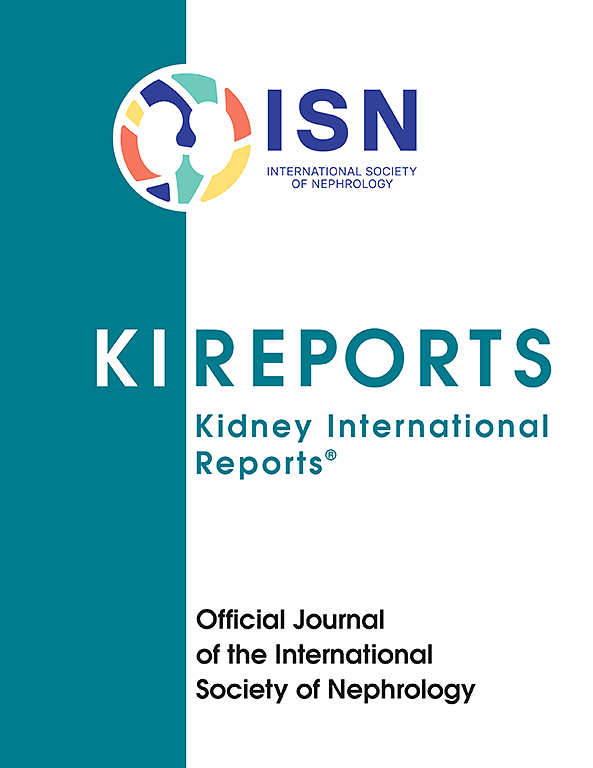Addition of a Loop Diuretic to Norepinephrine During Treatment of Hepatorenal Syndrome Type 1
IF 5.7
2区 医学
Q1 UROLOGY & NEPHROLOGY
引用次数: 0
Abstract
Introduction
Diuretics are commonly discontinued in patients with cirrhosis with acute kidney injury (AKI) because they are presumed to trigger hepatorenal syndrome type 1 (HRS-1). We hypothesized that if HRS-1 is adequately treated with a vasoconstrictor (mean arterial pressure [MAP] effectively increased), diuretics are safe and effective.
Methods
Records of hospitalized patients with cirrhosis who received i.v. furosemide while receiving i.v. norepinephrine as a vasoconstrictor to treat HRS-1 were examined. We assessed change in urine output (UOP), trajectory of serum creatinine (sCr), and impact of portopulmonary hypertension (PoPHTN) on the therapeutic response.
Results
Twenty-six patients with HRS-1 received i.v. furosemide (median: 2 days, 160 mg boluses every 6–24 hours) added to i.v. norepinephrine. Median age was 51 years; 91% were of White race, 36% were women, and median model for end-stage liver disease score was 32. The median initial sCr was 4.0 mg/dl. Before treatment, median UOP was 358 ml/d. Norepinephrine alone led to a median increase in UOP to 850 ml/d. Addition of furosemide to norepinephrine induced a subsequent increase in median UOP to 2072 ml/d (P < 0.0001), which was not observed in a control group (n = 22) who did not receive furosemide. Nineteen patients (73%) treated with norepinephrine plus furosemide (median MAP increase, 16 mm Hg) either maintained or improved their sCr trajectory. The magnitude of norepinephrine-induced increase in MAP correlated with the norepinephrine plus furosemide-induced UOP (r = 0.67, P = 0.0002), and the correlation coefficient was numerically stronger among those with PoPHTN.
Conclusion
In patients with HRS-1 who are adequately treated with norepinephrine and achieved an optimal MAP increment, addition of i.v. furosemide enhances diuresis without negatively affecting renal recovery.

求助全文
约1分钟内获得全文
求助全文
来源期刊

Kidney International Reports
Medicine-Nephrology
CiteScore
7.70
自引率
3.30%
发文量
1578
审稿时长
8 weeks
期刊介绍:
Kidney International Reports, an official journal of the International Society of Nephrology, is a peer-reviewed, open access journal devoted to the publication of leading research and developments related to kidney disease. With the primary aim of contributing to improved care of patients with kidney disease, the journal will publish original clinical and select translational articles and educational content related to the pathogenesis, evaluation and management of acute and chronic kidney disease, end stage renal disease (including transplantation), acid-base, fluid and electrolyte disturbances and hypertension. Of particular interest are submissions related to clinical trials, epidemiology, systematic reviews (including meta-analyses) and outcomes research. The journal will also provide a platform for wider dissemination of national and regional guidelines as well as consensus meeting reports.
 求助内容:
求助内容: 应助结果提醒方式:
应助结果提醒方式:


